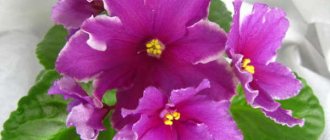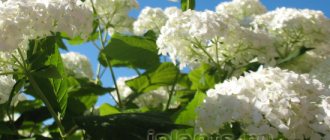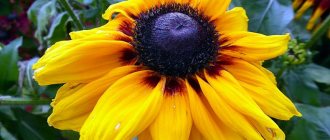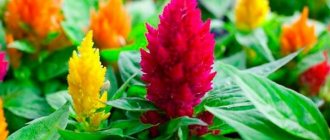Practice shows that consumption or close contact with dope leads to the appearance of vivid hallucinations. That is why shamans and witches used it for their magical rituals to deceive people.
Chemical composition of Datura
Dried datura leaves contain: atropine, hyoscyamine, scopolamine.
The content of essential fatty oil in yellow dope seeds is 25%.
German scientists first discovered daturine in Datura leaves in 1831.
Other isolated Datura alkaloids: meteloidine, norgioscyamine, pseudotropine, tigloidine, tropine.
Medical use
Datura herb is actively used in both traditional and folk medicine. In pharmacies you can find the following dosage forms using this plant:
- Oil tincture is used for external use, but for chronic constipation it can be taken internally;
- Oil prepared from its fruits and seeds is commonly used as an hair removal agent;
- The plant can be found in various herbal preparations aimed at treating asthma, bronchitis and other similar diseases;
- This plant is also used to make anti-inflammatory drugs for rheumatism, arthritis and pleurisy.
ethnoscience
In folk medicine, there are a huge number of recipes that include datura herb:
- Shortness of breath or severe cough - the dried leaves are crushed and 0.1 grams of the product are mixed with a glass of water. This remedy is taken three times a day;
- Paroxysmal cough - it is recommended to inhale smoke from burnt leaves of the plant;
- Chronic cough - 10 grams of wild grass seeds are thoroughly crushed and poured with 50 milliliters of 70 percent alcohol. Then the resulting mixture is infused in a dark place for 14 days. Once ready, the infusion is taken 4 times a day, 2 drops, with plenty of liquid;
- Epilepsy, convulsions, excessive nervous and sexual excitability - a teaspoon of whole dope seeds is poured with 200 milliliters of boiling water and left for 30-40 minutes. This tincture is consumed three times a day, 1 teaspoon;
- Depression - 1 drop of freshly squeezed juice from the leaves of the plant is mixed with two tablespoons of water and taken this mixture 3 times a day;
- Bruises, sprains, hematomas, mastitis, etc. - pour a teaspoon of seeds into a glass of hot water and boil for 1 minute. The decoction can be used as a means to rub the affected areas;
- Erysipelas - 20 grams of crushed seeds are mixed with 250 milliliters of boiling water and left for 1-2 hours. After the tincture is ready, add another 250 milliliters of clean water and use it as a lotion on inflamed areas of the skin;
- Prolapse of the uterus and rectum - 20 grams of crushed leaves are poured with 2 liters of water and simmered in a steam bath for an hour. The resulting broth is poured into a hot bath. It is recommended to take such a bath for 20-30 minutes;
- Cramps and other painful sensations in the stomach - 4 grams of seeds are mixed with 4 grams of Adonis seeds and 200 milliliters of water and then left for 40-50 minutes in a water bath. The resulting infusion is taken 4 times a day, one teaspoon before meals.
Feeding for datura
It is necessary to apply organic fertilizers with the addition of mineral fertilizers weekly.
During flowering, Datura needs more phosphorus and potassium supplements. After 2 months of growth, some nitrogen fertilizer should be added.
Plants that winter without lighting do not need feeding.
Features of cultivation
Datura loves bright sun, but does not tolerate cold drafts. The plant can withstand the summer heat provided it is watered abundantly. Datura feels most comfortable on compost and manure heaps.
Preparing the landing site
For dope, choose a leeward, sunny place. The soil is prepared in the fall from a mixture of loose garden soil, rotted manure and river sand. The ratio is 2:2:1. This composition is suitable for sowing seeds and planting seedlings. The thickness of the soil layer should be at least 50-60 centimeters.
Planting material
Datura can be propagated by seeds, seedlings from seeds or from cuttings. When planting seeds in the ground, it is recommended to stimulate their germination. To do this, they are filled with water at a temperature of 45-50 degrees for 20 minutes. Seeds that have settled to the bottom are suitable for sowing.
For seedlings, seeds are sown in March in a container with soil mixture, covered with film and care is taken to ensure that the soil is always moist and warm before germination. With the emergence of shoots, the film is removed and the sprouts are transferred to a cool, well-lit place. On the 3rd leaf, a pick is made and the plants are distributed into separate containers.
Planting process
Seeds and seedlings are planted from seeds in May, when stable warmth has established. For planting, prepare holes at a distance of 1 meter. The seeds are deepened to 8-10 centimeters. Seedlings require a hole corresponding to the volume of the root system. After planting, the soil is filled up, slightly compacted and watered abundantly.
Pests and diseases of Datura
Whitefly and spider mites are the main enemies of Brugmansia. Mandatory spraying of the inner parts of the bushes with insecticides should be carried out monthly in winter and summer.
Plant care
The main care for dope consists of watering, pruning, and disease control. Loosening the soil and removing weeds is required for the first month until the plant has branched shoots covered with large leaves and buds. Shade and aroma inhibit the growth of weeds near the datura.
Watering
The difference between Datura and flower crops is that it needs hard water. In its absence, the datura is watered 1-2 times a summer with lime water prepared from 10 grams of dry slaked lime and 10 liters of water. Once a week, add 20 grams of complex mineral fertilizer to a bucket of water.
The plant does not tolerate dry soil and drops its buds. The soil must be moistened abundantly. The frequency of watering depends on the air temperature and the amount of precipitation.
Trimming
The fading “gramophones” are removed so that the datura bush looks just as elegant and to stimulate new budding. To obtain seeds, leave a few of the very first flowers to bloom. Full ripening of the ovaries occurs 60 days after the start of flowering.
Pruning is carried out in 2 cases: when grown as a perennial and when stored indoors in the winter. The perennial leaves its youngest shoots at the end of September, forming the future crown.
Top dressing
Once a week from June to August, 20 grams of complex mineral fertilizer are added to a bucket of water. Organic fertilizers alternate with mineral ones if there is not enough humus in the soil where Datura was planted.
See also
Description and characteristics of the Blue Moon wisteria variety, planting and careRead
Wintering
In regions with cold winters, annual datura can be dug up and placed in a spacious pot with a nutrient mixture. Pruning is done first to form a crown of young shoots. Plants are placed in a cool room where the temperature does not rise above +15 and does not fall below +8 degrees.
Datura sheds its leaves, but remains viable.
In the spring, after transplanting into the ground, new leaves appear, shoots grow and buds bloom.
Beneficial medicinal properties of datura
They learned how to prepare various alcoholic tinctures, extracts and extracts from Datura.
In different countries they have learned to use the “mad potion” to treat convulsions, seasickness, bronchial asthma, and air sickness. Many countries use datura as an antispasmodic, antidepressant, and analgesic. Surgery has long recognized the analgesic effect of Datura and uses it widely. Datura oil is used to treat radiculitis, rheumatism and neuralgia. You can get rid of unwanted hair forever with the help of devil's grass oil extract.
Contraindications
After consuming 20-25 dope seeds, after 10 minutes the dryness in the mouth becomes such that it is impossible to even swallow saliva. The voice changes, the pressure rises, hoarseness appears. The skin becomes hot and loses sensitivity, the pupils dilate, and there is lethargy and weakness. A person begins to communicate with non-existent people, as if swatting away flies. A few days after dope poisoning, there is a feeling of fear, anxiety, blurred vision, and fussiness.
Lift the veil of a mysterious flower
Datura is an evergreen herbaceous perennial. It grows in the tropical and subtropical zones of our planet. Feels comfortable in steppe regions and hilly areas. In cool climates, the flower is grown as an annual option. It is often found in vacant lots and on roadsides. It loves moist soil, so it appears in the shade of buildings as a weed. On the Crimean peninsula it is grown for medicinal purposes.
In accordance with different folk legends, the plant is called differently. Here are some of them:
- angel trumpets;
- henbane;
- devil's grass;
- Lunar flower;
- crazy grass;
- drunk;
- thistle;
- witch herb;
- mad potion;
- stupefying grass.
Of course, the names are not very pleasant. In addition, the flower was used in pagan cults to communicate with demons. And ancient healers treated serious diseases with the plant. Be that as it may, if you follow safety rules, dope can easily be grown in your summer cottage.
The flower is considered a representative of the Solanaceae genus. Its close relatives are quite pleasant plants. These are everyone's favorite potatoes, juicy tomatoes or purple eggplant. Basically, datura is a large herb, which is distinguished by lodging or erect tubular shoots. They can reach a height of about 120 cm. The outside of the stems is covered with a glossy dark green or reddish bark. When Datura grass ages, the basal shoots become lignified, acquiring a brownish color.
From the main trunk there are shoots, on which there are successive leaves of large sizes (length approximately 15 cm, width about 10). They come with a jagged frame or oblong shape. The color of the outer side is dark green. The back part is usually lighter in color. Interestingly, along the vein located in the center of the leaf, a light-colored stripe is visible, which gives it a stylish look.
If you carefully examine the photo of a dope flower, you will notice that the buds arise in the axils of the leaf plate or on the forks of the shoots. The magnificent trumpet-shaped inflorescences consist of five delicate sectors. The depth of the funnel reaches about 15 cm. Some species can boast of bells 25 cm long. Buds appear with the arrival of the first days of summer. The last inflorescences are pleasing to the eye in the fall, when frost sets in. Datura flower can be painted in bright colors:
- snow-white;
- orange;
- yellow;
- bright lilac;
- violet.
The original shape of the bud comes in the form of a simple large bell, with fused petals. Some species are distinguished by spiral-shaped complex inflorescences. It has been noticed that the Datura plant does not always emit a pleasant aroma. Some varieties have virtually no smell, but have unsurpassed beauty of buds.
Since the flower is a nocturnal plant, you can admire its buds only after sunset or on cloudy days. When planting on a summer cottage, this fact should be taken into account.
When the lush flowering passes, fruits form on the bushes in the form of large oblong boxes filled with seeds. On the outside they are covered with a dark green skin with original spikes. The inside of the fruit is divided into 4 sectors.
Each of them contains black seeds, round or kidney-shaped. The first boxes appear in July.
Caution during use
Caution must be exercised when using Datura herb. It is worth remembering that this is a poisonous plant
If the dose is calculated incorrectly, the person may become poisoned. In some cases this ends in death. Therefore, the use of such a remedy during the treatment process must be taken with full responsibility.
Datura is absolutely not suitable for self-treatment. The seeds of the plant are especially poisonous. However, alkaloids are found in almost all parts of the plant, just in lower concentrations.
If a person takes a large dose of dope-based medicine, characteristic symptoms of poisoning will appear. In this case, the pupils dilate and the oral mucosa dries out. The voice becomes hoarse and the pulse increases noticeably. The headache gradually increases. The skin of the face and neck turns red.
When poisoned, a person suffers from severe thirst. He feels excited, nervous. Hallucinations may appear and speech becomes incoherent. If no action is taken, the person falls into a coma. It is worth considering that dope poisoning most often occurs in children. They can find this plant in the garden and collect seeds from it. If the baby swallows this part of the plant, help will need to be provided immediately. Therefore, it is not advisable to plant this plant in the garden if you have small children.
When the first symptoms of poisoning appear, you need to rinse your stomach. To do this, prepare a weak solution of potassium permanganate. An adult should drink three liters of prepared water. Then vomiting is induced artificially or naturally. At this time you need to call an ambulance.
After gastric lavage, a person will need anticholinesterase and cholinomimetic drugs, possibly morphine (this is decided by emergency doctors; no drugs can be taken on their own). You can drink adsorbents and after a few minutes rinse your stomach again. After this, symptomatic treatment is carried out, and restorative therapy is prescribed.











